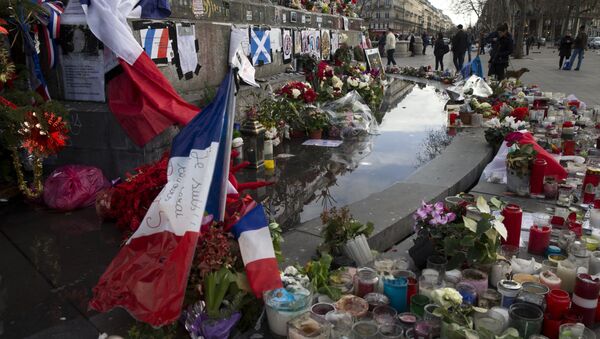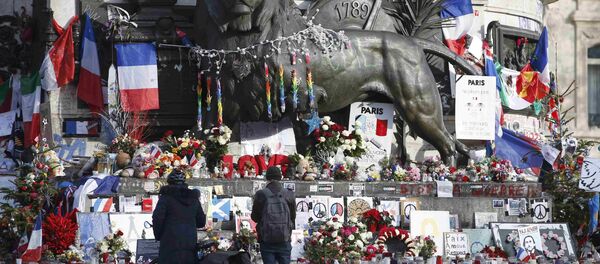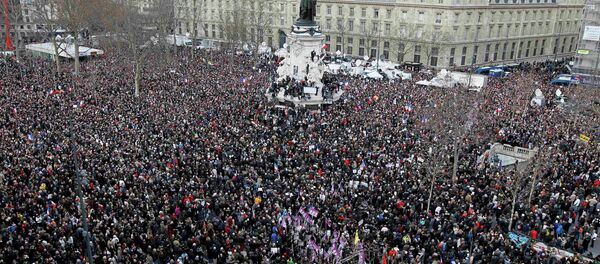MOSCOW, January 7 (Sputnik) — The magazine has repeatedly published cartoons of Prophet Muhammad prior to the attack. According to eyewitness accounts, two masked gunmen, armed with Kalashnikovs and a rocket-propelled grenade launcher, shouted that the attack was "revenge for the prophet." The gunmen reportedly asked for the cartoonists by name before shooting them. The attackers fled by car, running down a pedestrian.
Manhunt was launched for Said and Cherif Kouachi, the main suspects in the attack. They were included in the US Terrorist Identities Datamart Environment (TIDE).
Тhe third suspect was in the car waiting for the attackers. Subsequently, Hamid Murad, 18, turned himself in to police, claiming that he had an alibi. He said he was at school during the attack.
A member of the al-Qaeda extremist group in Yemen claimed that the organization led the attack and it was carried out in response to the "ongoing desecration" of Muslim shrines in the media, according to a statement spread by media outlets.
French President Francois Hollande declared three days of national mourning in memory of the victims of the attack.
On the night of January 7, four grenades were thrown at a mosque in the Sablons neighborhood in the city of Le Mans, western France. According to media, the attack took place at about 12:30 a.m. local time [23:30 GMT]. No injuries were reported.
On the morning of January 9, two men armed with automatic weapons stole a car in the Oise department. Later, the two assailants, who turned out to be the Kouachi brothers, took a hostage in the Seine-et-Marne department and tried to shoot their way out, killing two and injuring 20 people.
Later that day, the brothers holed up in Dammartin-en-Goele were killed by commando units and their hostage was freed.
On the same day, a man armed with two Kalashnikovs, burst into a kosher supermarket at Porte de Vincennes in east Paris, opened fire and took hostages. He was also the one to who was involved in the Montrouge attack.
The extremist said in a telephone conversation with a BFMTV reporter that he was acting on behalf of Daesh (Islamic State, outlawed in Russia among other countries) and coordinated his actions with Cherif and Said Kouachi, demanding their release.
At about 5 p.m. (at the same time as the operation at Dammartin-en-Goele), commando units stormed the supermarket, killing the assailant. He was identified as Amedy Coulibaly, 32. Four people were killed in the shootout, 15 hostages were released. All four were killed by Coulibaly.
Nine people were detained in the investigation into the Charlie Hebdo attack. Later, five suspects were released.
On June 18, media reports revealed that Paris law enforcement detained two suspects in the Charlie Hebdo and kosher supermarket attacks. According to investigators, one of the detainees was linked to Coulibaly.
On December 15, French media reported two men were detained on suspicion of providing weapons to Coulibaly.
According to local media, French investigators found letters at Coulibaly’s home suggesting that he had received orders by email. An unidentified sender instructed the terrorist to "act on his own" and "act by simple and safe methods." The "instructor" did not tell the attacker what his targets should be, telling him to "rely on his own judgment" and that the terrorist attack could be carried out in a suburb rather than in the capital if that were easier.
The French authorities are also looking for Coulibaly’s likely accomplice, his common law wife Hayat Boumeddiene, 26.
In April, she called her family to say she was on the Daesh-controlled territory.





